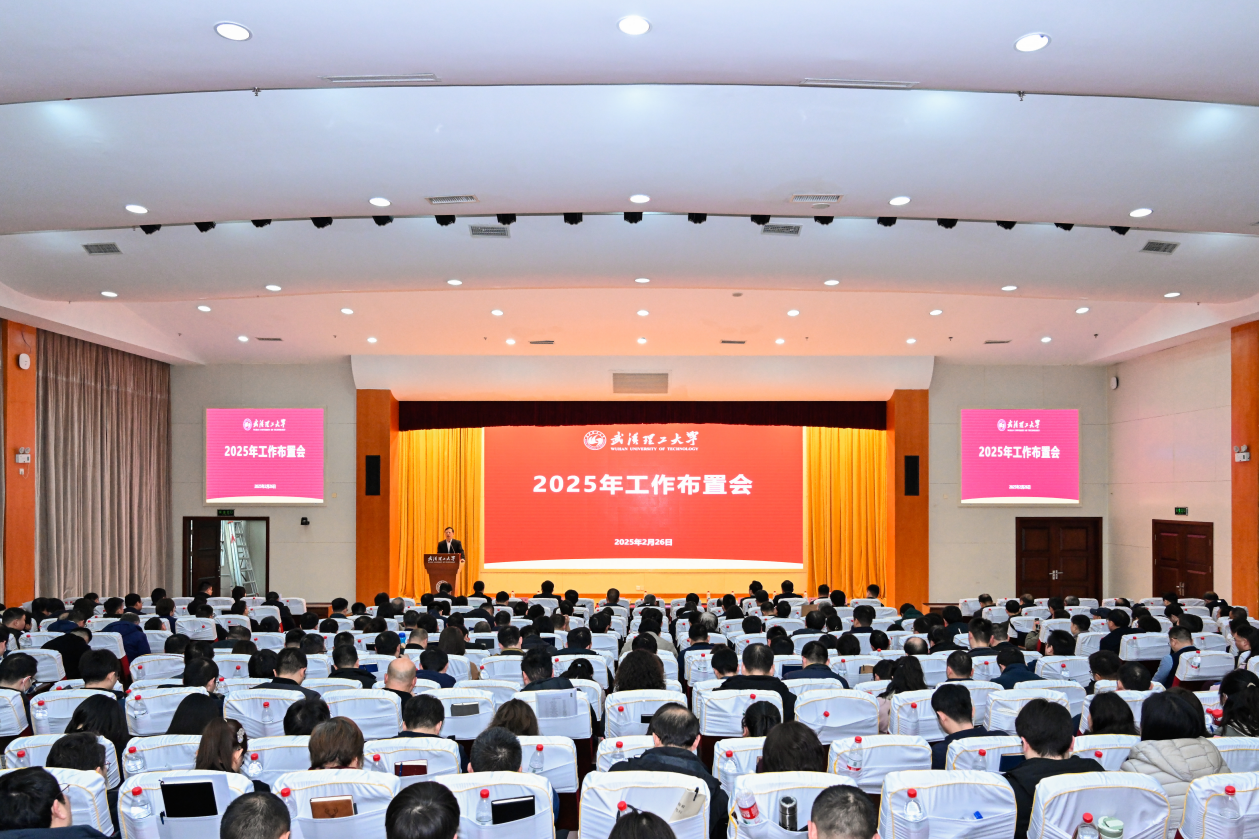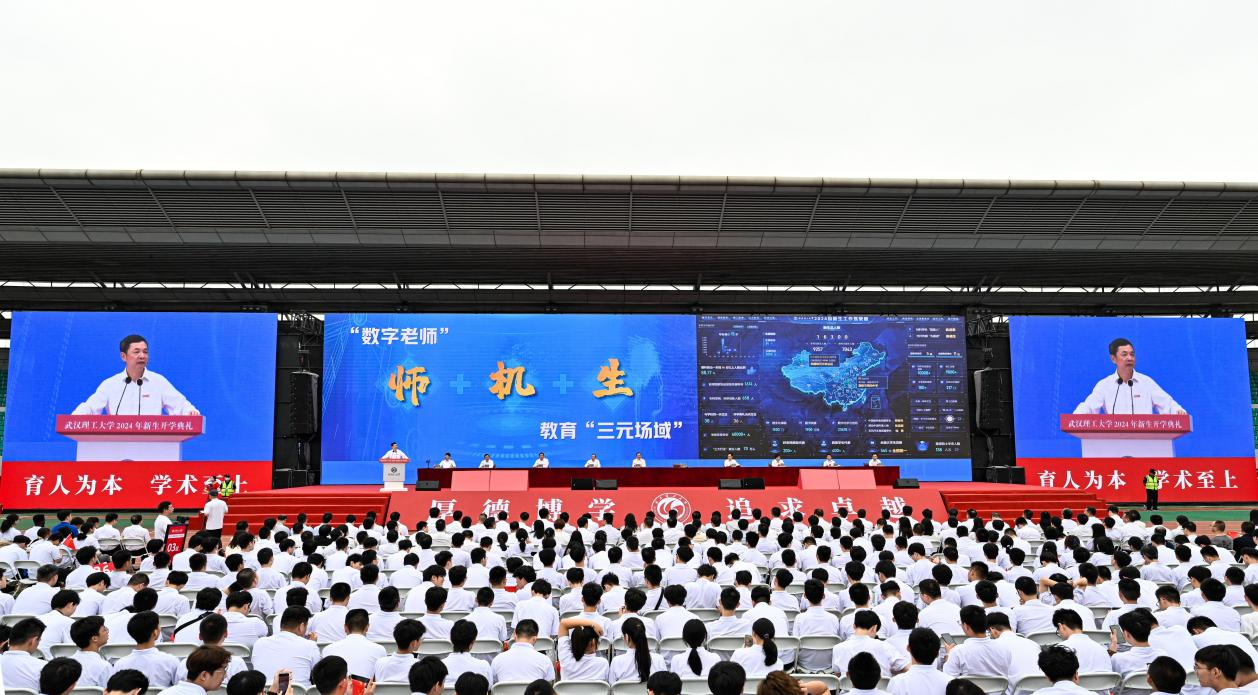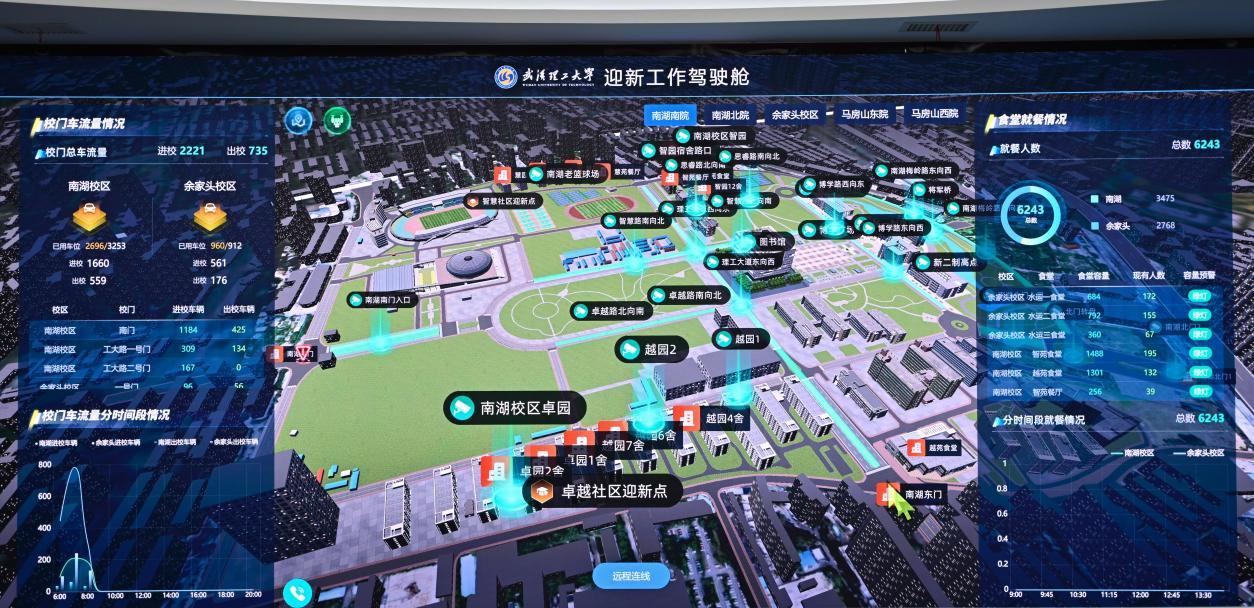
[Editor’s Note] Chinese President Xi Jinping emphasized, “Education digitization is pivotal for China to pioneer new pathways and advantages in education.” In the Era of Intelligence propelled by surging digital waves, higher education’s digital transformation has emerged as an irreversible global trend, a developmental necessity, and a strategic imperative for institutional reform. Wuhan University of Technology (WUT) has actively seized these opportunities, positioning digital transformation as the core engine for systemic reforms. By driving innovations such as smart campuses, AI-enhanced teaching ecosystems, and data-driven governance frameworks, the university aims to establish itself as a national benchmark for digitally transformed higher education institutions. Coinciding with the 2025 World Digital Education Conference, where WUT will host the parallel session “AI for STEM Education”, this portal launches the “Digital Intelligence @WUT” column. We invite global educators to explore collaborative pathways and to envision future paradigms of education together.
Amid surging digital tides and empowered by intelligence, WUT actively implements China’s National Strategy for Educational Digitalization, transforming "technological shifts" into "educational opportunities" by redefining standards for higher education digital transformation. It pioneers a new "AI + Education" model characterized by connectivity, openness, and boundaryless collaboration, reshapes pedagogical approaches from “teacher-centered” to “learner-centered” paradigms, restructures management systems for more precision, transparency, and efficiency, and establishes a "digital foundation" to support high-quality education, achieving the “dual leadership” in theory and practice and contributing to the education digitalization with "WUT Standards" and "WUT Solutions".

"We must empower through digitalization with high standards," emphasized Xin Sijin, Secretary of WUT’s Party Committee, at the 2025 university work deployment meeting. He urged to accelerate the development of a benchmark university for digital transformation, drive reforms in talent cultivation models, institutional operations, governance frameworks, and support mechanisms through digital empowerment, thereby supporting WUT’s high-quality growth.
Facing the educational transformation of the intelligent era, WUT is committed to building a comprehensive, open, and personalized educational ecosystem. Leveraging networks, big data, and artificial intelligence, WUT extends education beyond physical campuses and has established a "knowledge + data"-driven platform, WUT Smart Courses, to aggregate high-quality resources. Collaborating with three major industries: building materials and construction, transportation, and automotive, WUT integrates cutting-edge technologies and real-world scenarios into teaching, extends the boundaries of "teaching" and "learning" beyond campus to corporate R&D fronts and industrial production lines, and transplants modern industry advancements, such as intelligent and green development practices, directly into teaching. The university has established 20 immersive learning scenarios at its Future Learning Center. These allow students and faculty to gain a comprehensive, on-campus understanding of digital-era technological innovations and industrial transformations without leaving campus.

At the 2024 opening ceremony, President Yang Zongkai introduced WUT’s "digital profile" system to freshmen, "From the moment you enter WUT, each of you will have a personalized digital profile. Your academic progress, research achievements, extracurricular activities, and volunteer work will all be tracked to support your growth."
In recent years, WUT has pioneered a "Five Duals" educational model (dual-mentor system, dual-learning spaces, dual-college collaboration, dual-integration of disciplines, and dual certification) to advance AI-powered teaching and learning. By analyzing 240 multidimensional student traits—including personality, social skills, competencies, behaviors, and evaluations—through big data, the university creates precise "digital profiles" for each student. These profiles enable personalized guidance, fostering a "one-plan-per-student" approach to education. WUT has also comprehensively revised its talent development framework, promoted reforms in undergraduate-graduate integrated training models, built an AI-focused general education curriculum, and launched initiatives like the 3S Competitions. Additionally, smart tools such as AI Study Companion and AI Research Assistant have been developed to enhance students’ digital literacy and innovative capabilities, driving a shift from the traditional "binary teacher-student dynamic" to a "teacher-machine-student triad" in education.
With a single touch on his office screen, the President can access real-time classroom data across all campuses, collaborate with deans in the data cockpit for evidence-based decision-making, and ensure department heads receive timely updates and deviation alerts from the AI-powered presidential assistant. The data cockpit has become a pivotal tool for the university to seize new opportunities in educational digitalization..
Guided by the principle of “integration-driven, collaboration-empowered development,” WUT has anchored its strategy on data as the core enabler. By focusing on critical areas—talent development, scientific research, social services, and institutional governance—the university has identified 60+ key metrics, formulating its “Ten Key Indices” for holistic institutional evaluation. These metrics power the President’s Data Cockpit, enabling real-time monitoring and centralized command of institutional progress through a single interface. WUT established Department Heads’ Data Cockpits, targeting planning, regulation, evaluation, and service delivery. It highlights mission-critical metrics, ensuring all leaders maintain data-informed awareness. At the college level, the Deans’ Data Cockpits integrate six themes—college profiles, talent development, teaching quality, research output, faculty resources, and Party-building/student affairs—into a unified analytics platform. The three-tiered data cockpit system (president, department heads, deans) is interconnected through a centralized data hub, ensuring unified data sourcing, interoperable architecture, and cross-tier collaboration and driving precision, transparency, and streamlined decision-making across all levels of governance.

During the 2024 freshman registration period, WUT’s Smart Operations Center leveraged traffic heatmaps displayed on its giant screens to monitor real-time road conditions. The system analyzed vehicle density to detect congestion: “If fewer than five vehicles pass through a road section within five minutes, the system flags it as congested, marking the area red or dark red on the map. Staff then initiate predefined traffic management protocols to divert traffic.” This integration of density analytics, live visual feeds, and rapid response mechanisms enabled efficient, data-driven traffic coordination across campus.
WUT has developed a 3D visualized digital twin platform integrating critical domains such as network, energy, transportation, security, asset, application, operations, and security. By synergizing “educational big data + computing power + algorithms,” the university has established a robust digital foundation to unify teaching, administrative, and service platforms campus-wide, and constructed a data-driven and human-technology collaborative ecosystem ensuring smart and quality-assured governance. The university has developed a smart, integrated logistics service system that combines facility maintenance, access control, dormitory management, dining services, and performance evaluation into a unified platform. This system delivers comprehensive, mobile-optimized, and AI-powered support services across all campus scenarios, ensuring seamless and intelligent day-to-day operations for students and staff. WUT has established a dual-coupled data hub, “data + models”, that integrates 170 platform systems, boosting daily data exchanges from 700 million to 2.5 billion transactions. This enables full integration of digital components across all domains, supported by a robust digital infrastructure framework that streamlines administrative processes for students and staff. By prioritizing “data mobility over human commutes”, the system significantly enhances the campus community’s sense of fulfillment, well-being, engagement, and satisfaction rates.
Looking back, every step taken has been a testament to perseverance; looking ahead, every journey ahead is a voyage toward aspirations. The future is coming, demanding renewal through innovation and strength forged in transformation. Amid the surging tide of artificial intelligence, WUT will remain steadfast in its mission, overcoming challenges and navigating headwinds on the new frontier of educational digital transformation. With unwavering resolve, WUT is poised to forge a new chapter in high-quality, digitally empowered education.
Source: Publicity Department of WUT, Office of Administration of WUT, Information Office of WUT
Written by: Li Tiantian
Reviewed by: Ju Chao
Edited by: Li Huihui, Li Tiantian
|
|